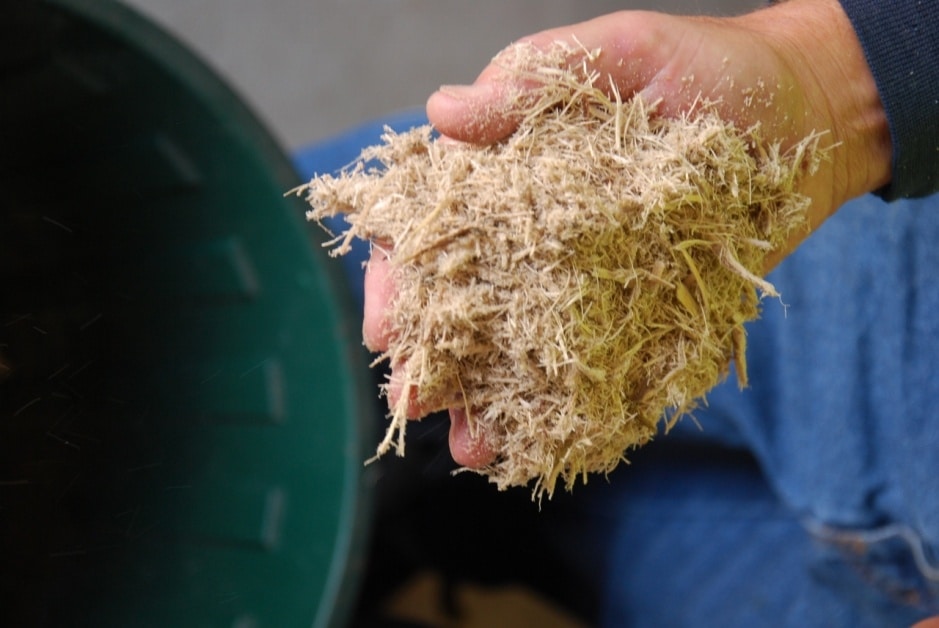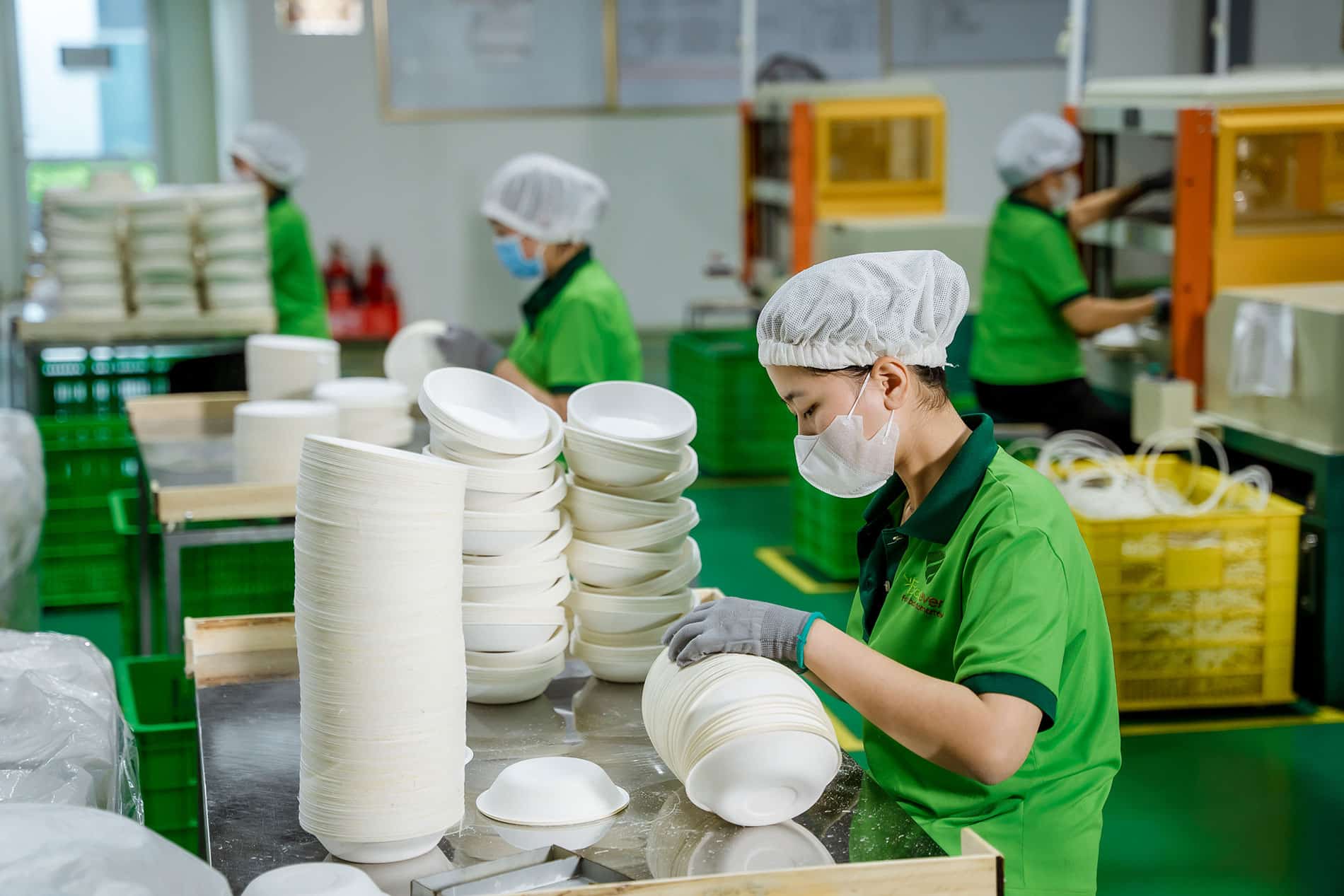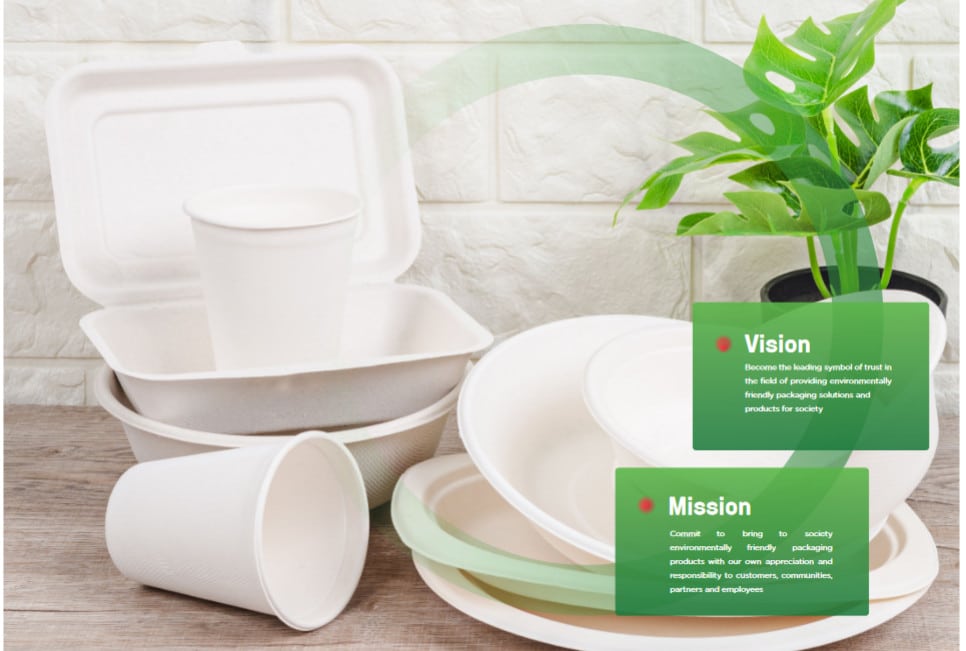In the face of climate change impacts, when the environment is heavily polluted and natural resources are gradually being exhausted, the wave of green consumption is spreading globally. Thus, sustainable production is an inevitable trend in global economic growth strategy. In the face of climate change impacts, when the environment is heavily polluted and natural resources are gradually being exhausted, the wave of green consumption is spreading globally. Thus, sustainable production is an inevitable trend in global economic growth strategy. Furthermore, our bagasse products are biodegradable because of their plant base. By providing an alternative to plastic packaging, EEV contributes to reducing marine waste and limiting any forms of marine and land pollution. The following article outlines the production process of bagasse food containers at EEV. The following article outlines the production process of dishes and containers from bagasse at EEV.

Overview of bagasse
Bagasse is known as the remaining fiber from the process of producing cane sugar or pressing juice. Bagasse is known as the fiber left over from the process of producing cane sugar or pressing cane for juice. Bagasse is used as a grinding material; each ton of bagasse can replace 0.5 – 0.8m³ of other fibrous materials. Because it belongs to the type of straw fiber, the silicon content is much lower than other fibers, so bagasse is easier to bleach and make cooking bagasse flour with much less chemicals. Besides, sugarcane has high regeneration ability, which is an abundant source of raw materials for the paper and food packaging industry. Therefore, bagasse can alleviate the pressure of tree shortage, protect green space and balance ecology.
Checking input materials
After harvesting large amount of bagasse from sugar companies, raw materials will be shipped directly to the factory for staff to check the quality. Production materials must be clean and not altered by fermentative microorganisms.
Cooking bagasse
The most common cooking equipment in the bagasse crushing process is the kiln. The most common cooking equipment in the bagasse crushing process is the kiln. The most common cooking equipment in the bagasse crushing process is the kiln. The most common cooking equipment in the bagasse crushing process is the kiln. These reduce cooking time, alkali and steam consumption. Besides, cold blowing also helps lowering the risk of fiber damage and increasing the durability of the pulp.
Cleaning and screening
Bagasse cleaning equipment usually uses a vacuum cask washing machine because of low cost, easy operation and high extraction rate of black alcohol. Then factories apply an open-type low-concentration screening system. Then factories apply an open-type low-concentration screening system. The output wastewater, which may reach 75m³, increases the production cost of bagasse powder.
Bleaching bagasse
After the pulverization process, the materials still have a light brown color due to residual lignin content. Therefore, the bleaching process is carried out. Since bagasse powder is easier to bleach, conventional CEH bleach, which can bleach bagasse powder to 80% ISO, is widely applied in traditional bagasse powder production lines. However, in recent years this method has ceased to be widely used. Instead, H2O2 is utilized during the pulp bleaching process. This bleaching powder has higher whiteness and stability, low pollutant and low damage to bagasse fiber.
Producing food package from bagasse
- Box Forming: This is the process of making the raw pulp into the shape of a semi-wet pulp product. The pulp is dehydrated on a metal mold to form a prototype of a wet pulp box. About 95% of the water in the pulp is removed during the molding process. The molding machine removes water from the bagasse box prototype during forming to reduce drying and dehydration costs. At the same time, the compression helps to increase the bonding force between the fibers and increase the strength of the wet paper mold. After shaping the bagasse box, it comes to the drying stage to heat and evaporate the mold with the help of the forming mold heat, and at the same time play the role of sterilization.

- Cutting: This process uses hot press molding, machining, removes the mesh marks left by the paper network, makes the inner and outer surface smooth and smooth. The factory can laminate some text and patterns according to different user and customer requirements. At the same time, the border on the edge of the cutlery is cut off and indented for easy opening and closing.
- Product quality inspection: According to the external appearance and inspection requirements of the company, we check whether the product is qualified or not, then classify the finished product as first class or waste product.
- Metal detectors: Each bagasse food container should be checked with a metal detector to ensure they meet food safety levels.
- Metal detectors: Each bagasse food container should be checked with a metal detector to ensure they meet food safety levels.
- Packing: Enterprises usually pack in 3 ways: standard packing (packing material is PE), heat sealing (packing material is POF) and heat shrinking (packing material is POF).
Advantages of bagasse packaging products:
- Safe for the environment and human health.
- Can be used for hot and healthy food and safe for microwave
- Holds different types of drinks
- Durable, sturdy for daily life and business purposes
- The decomposition time of bagasse products is fast: only about 3 weeks for the product to decompose completely instead of taking several hundred years like conventional plastic products.

Ecoever specializes in distributing products from high quality bagasse food packaging
Before deciding to use products from bagasse, customers need to consider and choose a reputable supplier. Poor quality products may directly affect customers’ health and shopping experience. Ecoever has been devoted for the mission of bringing customers sustainable products and received heart-warming response from countless customers. We understand that protecting the earth with the smallest things is protecting our health for the future.
However, before deciding to use products from sugarcane bagasse, you need to consider and choose a reputable supplier. Because if you unfortunately use poor quality sugarcane bagasse products, it will unintentionally directly affect your health and shopping experience.
If you are looking for a distributor of superior bagasse products, please contact EEV via 0934357588 – Mr Thịnh or email: thinh.ta@ppj.vn for free consultation and order quickly!

